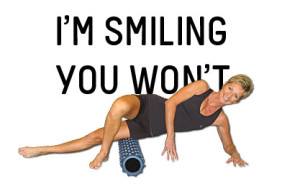So we all know that breathing, posture and lifestyle habits all play a part in living optimally for a number of reasons.
From movement quality and less pain, to sleeping better and lifting heavier, these next two actionable performance tips are so easy to implement, you’d be crazy if you didn’t.
Foam rolling and mobility.
Look, I will admit that I have already talked about one of these before in depth in my book Game Changers (if you haven’t picked up a copy, it’s free right through this link – http://haydenperno.com/gamechangers/), and even on my Facebook page last year, but it doesn’t matter. These two are ideal actionable tips to add into your routine for not only an improvement in your training and day-to-day life, but even in bed.
And yep, I am talking about the thing you’re thinking of and sleep quality too.
Anyway, to keep me from repeating myself, I won’t go into the foam rolling in complete depth, I’ll let you read it in Chapter 9 (http://haydenperno.com/gamechangers/). But what I will do however is give you a quick refresh of it and give you some cool new mobility drills that you’ll be able to implement immediately.
Let’s get into it.
Press start.
Self-myofascial release (SMR) really is a popular solution to all of the world’s problems.
Want a new job? Try foam rolling.
Need more money? Try foam rolling.
Sick of your girlfriend? Just foam roll her.
It really is too simple.

Okay, in all seriousness, none of that is true.
But, the foam roller/any tool that is used for SMR can and may be a great addition to your arsenal.
These implementations (along with every living things favourite pastime – breathing) making use of the foam roller can be ideal to help shift your body from a sympathetic (uptight, stressed and tight) state to more of parasympathetic (chilled, resting and digesting) when required. And supple, focused and in less pain when wanting to lift heavy objects against the Earth’s gravitational pull.

Sound too good to be true?
Well it isn’t. And I’m going to give you a plan of attack right now for you to add into your routine.
Foam refresher.
Weird blue cylindrical items these guys are. And whilst I’m not advocating any sort of necessity for these tools that you see laying around the gym these days (the foam rollers I’m talking about), the fact that from my experience, I and at least 90%+ of my clients feel better after using them, surely is a good indication that there is some sort of merit in the use of them.
And hey, not to mention the millions of other people from around the world that swear by them too, of course.
So what makes these tools so great?
It’s a debated topic, but what a lot of the signs seem to point to is that it helps switch off neural receptors that are literally found in all parts of our body.

When our body holds tension in certain areas (iliotibial band, adductors, glutes and lower back just to name a few), it usually is due to a requirement.
If you have a weakness or tightness in certain parts of your body, other areas start kicking up a notch to help keep you moving and alive.
So what tends to happen is that these areas take on more than they can handle and end up building up a lot of tension resulting in angry neural receptors.
Push into them with enough pressure, and you’ll feel a nice, warm painful feeling.
This is where these rollers play their part. And since they’re so simple to use, almost everyone can add them into their routine.

Let’s now go through a few of the more common areas of tension build up, and start with the good ol’ iliotibial band/tensor fascia latae combo situated on the lateral side of your upper leg, shall we?
You can see in the vid above that I move to a certain area and pause on one of those “nice, warm painful feelings”.
I like to then move the closest joint through as much range of motion that it has if the area is super angry.
This helps free up the tension as the joint moves through the motion that I’ll be mimicking when training/living.
You can use this method for practically any area of your body that you tend to hold more tension in. So, for example, your quads, lats, and even calves.
But, you don’t always have to use the foam roller for receptor release. It can also be used as a tool to improve mobility.
Foam mobility.
I like to use the roller for a couple of awesome mobility drills to help free up rib cage zones. And the two top choices are the Thoracic Opens:
Which you can perform by working through sections up the vertebrae, pausing, flattening out your lower back, and stretching/opening out over the roller like I do in the video above.
Another cool drill is the Foam Roller Pretzels (self-named):
Keeping a neutral spine, work on your breathing. And each time you breathe out, essentially “pull” you rib cage so that your shoulder eventually hits the ground. Definitely try to not torque you lower back throughout this movement.
And finally, one last mobility drill. But, for your lower body this time.
Work on building momentum through the movement by taking it slow to start off with.
This one is ideal to free up your lower body whilst working on keeping stable through the rest of your body. The trick is to try and keep your feet practically in the same spot the entire time.
Well, hopefully this gave you some immediately implementable performance tips.
Any Q’s, post ‘em below.


